Malina is one of the most common cultures of domestic gardening. Naturally, the emergence of new varieties always causes an increased interest of gardeners and dacities. The removable raspberry variety is one of the most successful examples of foreign selection, which, thanks to a variety of advantages, quickly passed on and adapted in our country.
Spearness, repair, high-yieldability, transportability, high taste and winter hardiness - not all positive qualities that attract both amateur garders and commercial organizations. And if we take into account the unpretentiousness of culture in care and high resistivity in almost any climatic conditions, this grade of raspberries deservedly occupies the leading position in the rafast variety of raspberries.
So how to choose the right place for landing Malinnik? What care to provide developing seedlings? How to independently dilute the hybrid on its site? All answers to these questions - read in this selection of material.
Malina Polan, a description of the variety
The raspberry variety was revealed relatively recently (in 1991) by Polish breeders by crossing such popular raspberry varieties as "Zew" and "Heritadzh".
Consider key varietal characteristics of raspberries:
- The main value of raspberries is its high yield and early ripening time. So, from one bush of adult plants can be collected from 4 to 6 kilograms of ripe berries. The ripening of fruits begins in the second half of summer and continues to the most frosts.
- Raspberries are farmingly a repairing variety that can be repeatedly fruit throughout the growing season. However, in order to get rich yields, it is necessary to take into account the peculiarities of the care of the facial, in particular the proper trigger of shoots.
- The raspberry berries are characterized by the correct rounded-conical form and medium large-scale weight with a weight of about 3-5 grams. Due to the dense structure and dry separation, they perfectly carry transportation and can save a fresh look for a long time. Berries are painted in a rich, red-raspberry color.
- The taste qualities of the variety are high, but largely depend on weather conditions: the Sunny weather - the minor will be fruit. Therefore, in the period of rain and at the end of the season, when the sun rays are not enough, the berries have a slightly acidic taste. Kostyanki small, little noticeable. Berries have a pronounced fragrance, which allows them to be used to prepare juices, jams and other delicious desserts.
- Erect plant shoots are strong with small spines, reach up to 1.5-1.8 meters in height. Variety refers to srednerosloe member of the species. Strong thick stems of raspberries, even under the heavy weight of ripe berries are not broken, and in most cases do not require additional support. Moreover, one raspberry bush is capable of forming up to 40 silnovetvyaschihsya such shoots, which uniformly (from the middle to the tip) branches distributed fruit.
- Leaves of the plant are painted usual for the species, dark green color with a whitish hue on the lower side. Numerous root processes are well developed, allowing the culture to grow rapidly over the site.
- Variety adapted to growing in almost all regions, characterized by high frost resistance and is easy to tolerate frosts to -30 0C. At the same time, remontant raspberries grow shallow and sour in a short rainy summer, so in areas with similar climatic conditions, this variety is better not to plant raspberries.
Raspberry sex, advantages and disadvantages
Summing up the main characteristics of a raspberry varieties of sex, we can highlight the main advantages and disadvantages of the fruit crops.
varieties of advantages:
- Berries ripen both annual and perennial on shoots (remontant properties).
- Crop will be ready in the first year after planting.
- Increased winter hardiness.
- High productivity.
- Early appearance.
- A long period of fruiting.
- Resistance to diseases and pests.
- Good transportability and keeping quality.
- Resistance to shattering when aging.
- Shrubs do not require garters.
- Fast and affordable reproduction.
- Ability painless growing in one place for more than 10 years.
varieties of disadvantages:
- Possibility of drying plants in the conditions of lack of moisture.
- Fast and aggressive growth of root shoots.
- Taste berries is characterized by a slight acidity, growing under the sun drawback.
Where and how to buy raspberries Polanyi?
- Sort of a floor - a very common kind of raspberries remontant, which can be purchased at any garden store or nursery.
- In the opinion of many horticulturists, Polana raspberry is not only suitable for "home" use, but also has proven itself as a "goods for sale". In Poland, for example, the raspberry cultivar has long been used on an industrial scale cultivation of berries.
- Raspberry seedlings are based both with a closed root system and open. Naturally, preference is given to the first embodiment, since such plants are not injured during transportation, landing, quickly take root and can be planted almost at any warm season.
- When buying raspberry seedlings, it is important to carefully examine all visible parts of the plant: they must be without damage and traces of illness, natural color and turgora (without dryness and lethargy). The height of seedlings should be at least 25-30 cm.
- Saplings with an open root system must have healthy powerful roots, without explicit signs of drying (including and tips). To "refresh" the roots after long-term transportation, it is necessary to place them for several hours in a bucket with water. And to carry "open" seedlings better, having wrapped the roots of raspberries into a wet fabric.
Features of landing raspberry
Considering the fact that the raspberry variety is far from growing in one place for about 10-15 years, it is important to initially choose the place for landing perennial seedlings.
Unpretentious culture, raspberries, non-demanding for the composition of the soil and perfectly transfers cold winters, but there are a number of factors, knowledge of which will make it easier to grow a berry culture and will help achieve the most rich yields.
Location and time of landing raspberry
- The best time for landing raspberry seedlings is considered the second half of the autumn (from late September to mid-October, depending on the region), but no later than 2-3 weeks before the upcoming frosts. During this period, "worth" relatively warm weather, and the soil retains a sufficient amount of moisture so that young plants will quickly fit and adapted to the onset of frosts. If you have to land at a spring time, it is necessary to do it on time before the start of the plant's deployment. As for seedlings sitting out of containers, the period of their landing can be any, from spring to autumn.
- The plot for planting perennial must be well lit, sunny and mad. The shadows of the raspberry bushes are pulled out, give less yields, and the berries acquire a noticeable sour taste.
- Raspberries develop and abundantly fruits on fertile turf-podzolic, non-acidic soils (for example, looglinka). The plant prefers lime soil, which means you should not use nitrogen-containing mineral fertilizers as nitrogen-containing mineral fertilizers. With a lack of lime, the ground periodically, 2-3 times a year, is saturated with this element.
- Good results gives advance (for the year and a half) the preparation of the site, for example, planting plants - Siderates. In the soil seeds the seeds of lupine, lentils, peas, which are then sprinkled into the ground to a depth of 30-40 cm. Plants rich in nutrients make it possible to significantly improve the structure of the soil and enrich it with fertilizers.
- Moofly loving raspberries, meanwhile, negatively refers to the constant stagnation of moisture, which may entail the rotation of the roots and the death of the plant. Therefore, a close (less than 1.5 m) groundwater occurs on the site is extremely undesirable.
Agrotechnology landing raspberry
- Before boarding the shoots, raspberry seedlings are shortened up to 40 cm, the leaves are removed. Some gardeners prefer to conduct breeding roots preparation, dipping them to the clay "bolt." Other experienced gardeners recommend pumping roots for several hours into a solution of growth stimulants as "corneser" or "heteroaceuxin". All listed techniques make it possible to achieve the most painless survival of the plant in a new place.
- After that, the landing place is preparing: the site is drunk, weeds are removed, they make humus. The depth and width of the landing pits is about 50 cm and is more dependent on the size of the roots. On the bottom of the pits, sand or fine gravel, serving subsequently with a drainage layer that impede water stagnation and, as a result, reinforcing the roots.
- You can land seedlings by one by one or rows - "trenches". The distance between the plants should be at least 80-100 cm, since it is based with age forms splashing multi-timer bushes that should not coal each other.
- In the event of a landing of removable raspberries with rows, ropes should be pulled between the piles. So trenches will be smooth and neat.
- A little fertilizer (humid, compost, wood ash, lime) mixed with a fertile layer of soil is placed on the bottom of the landing pit. Fresh manure is too aggressive additive, so it is impossible to use it.
- The roots of the seedling gently lay down the center of the earthen hilly (in the event of planting plants with an open root system), after which it is poured with soil, periodically sealing it.
- Root neck seedlings of raspberries should not deepen into the ground. Its correct location is 3-5 cm above the ground surface. An insignificant root of the root neck is allowed under the condition of loose light soil.
- Locked plants are abundantly watered with water and mulched peat or compost.
Malina Polan, Care Rules
It is very simple to care for Malina: the plant needs regular irrigation, periodic feeding and trimming for the winter.
In a good lighting, autumn Malinnik has time to replicate up to 80% of berries. To even more extend the catching time, the autumn shrubs of the raspberries are covered by any nonwoven material overnight. In such conditions, berries, though not so sweet, as in the summer, can be collected until the first frosts.
As mentioned above, the removable remains practically does not need a garter, but there are exceptions. This applies to too high heavy shrubs, which are overlapped with their massive numerous branches, complicating the departure of plants (weeding, loosening, harvesting). In addition, thickened landings increase the risks of the occurrence of Malinnik's diseases, and the branches can rush under the cargo of aging berries. In such situations, the raspberry bushes are better to encourage any support.
Malina Polan, watering and loosening
- Malina is a moisthed culture, which, however, negatively refers to the long-term stagnation of water. Excessive watering and permanent moisture stagnation provokes rotting and death of perennial.
- In the arid summer period, Malina Foree is watered more often, 2-3 times a week, at the rate of 2-3 buckets on one bush. With a lack of moisture, the raspberry berries are minced and become acid.
- Thus, the irrigation rate directly depends on the time of year and climatic conditions. The most important raspberry bushes are the following stages: dissolved and active growth of shoots, flowering and formation of berries, massive aging of the berries, the period of gravity collection.
- In the southern regions, in the conditions of dry hot air, in addition to watering under the root, the grinding of the ground part of the plant is practiced. Otherwise, yield decreases, berries minor and dried.
- Periodically, especially after the rain or irrigation period, the Malinik needs to loosen the soil and the removal of weeds. The loosening is carried out not deep (5-6 cm), taking into account the surface root of the roots of the plant.
- Good results gives a girling mulching, allowing for a long time to maintain the wet soil microclimate and preventing the growth of weed herb. As a mulch, the use of organic matter: sawdust, peat, foliage, beveled herbs, straw, wood chips, etc.
Malina Polan, fertilizer and feeding
In order for a bush of removable raspberry, a larger amount of berries and provided long-term fruiting, it is necessary to regularly feed the culture with nutritional elements.
- Malina Polan is demanding 1.5-2 times more feeding, rather than ordinary raspberry varieties.
- The best and affordable fertilizer for raspberries is a organic. It can be: reworked manure, compost, cowboat or bird litter solution.
- It is important to carefully observe the proportions of finished feeding in order not to harm the plant with aggressive or too concentrated organic additives. The "cobbled" bush will increase the green mass, reducing the number of uncens.
- To feed raspberry follows several times: early in the spring, at the beginning of the growth of shoots (use the infusion of a cowhouse 1:10 or chicken litter 1:20), during the bootonization period, at the stage of tying of future berries (urea, sulfate, potassium and superphosphate) and autumn, after Trimming (8-10 liters running under one bush).
- Feather Malnik, as a rule, in warm weather, after watering.
Malina Polan, Pruning
- Given the fact that Malina fruits on annual escapes, in late autumn, all branches are cut off (leaving about 8-10 cm above the ground). Such a "cardinal" trimming allows the plant to correctly redistribute nutritional elements and stimulate active fruiting for the next year.
- When cultivating the raspberry of a 2-year cycle, after collecting the first, summer harvest should be completely cut off the spinning shoots to stimulate the development of the second wave of the harvest. The shoots of the current year (reached the length of 60-70 cm) are shortened by about 20 cm, stimulating their branching and the increase in new fruit sprigs.
- In the spring, after wintering, they carry out a sanitary trim, in which everyone dead (dry, frozen) branches are removed to healthy kidney level.
- The advantages of such agrotechnical admission, as trimming lies in the increased resistance of diseases, increasing the yield of berries.
- In addition to trimming, if there is no need to multiply the raspberry on its plot, - you need to remove the root pig. The uncontrolled breeding of the raspberry thickens the plot and slows down the growth of the "maternal" plants, since the nutrient elements are partially taken.
Malina Polan, Diseases and Pest
Raspberries are founded by increased resistance to diseases and pests, which is an additional factor in demand for this removable variety. Occasionally, the plant can still be affected by some diseases and pests.
- The fungal disease, gray rot, causes the appearance of dark spots on foliage and berries, which provoke the development of rot. To combat the disease, it is necessary to cut off and burn all the affected parts of the plant. After that, the shrub is sprayed with burglar liquid. It is possible to process the plant not only during the period of the above-mentioned disease, but also in advance (in spring and autumn), in preventive purposes.
- Dwarfs or, as elsewhere called this disease, the "growing" manifests itself in the appearance of a small misconcellious ripple on the territory of Malnik. To exterminate the disease, it is necessary to completely destroy the affected raspberry seedlings.
- The most dangerous disease is the "anthracnose". The fungus of this infection parasitates on the surface of the elevated part of the plant, covering the leaves, berries and stem with gray small stains. As a result, the culture first reduces the number of fruiting strings, and then maybe even perish. For "treatment", any copper-containing drugs are suitable, for example, composure of copper.
- As for pests, Raspberries may be attacked by Malinous flies, malinous tick or twe.
- Malinous Fleece larvae cause fading the shoots and the death of young stems. To combat insects (as well as for preventive spraying), a mixture of insecticides ("Zircon", "Epin Extra" and "Citovit") is used.
- The raspberry tick and a wave, feeding the juice of the leaves, lead to the weakening of the plant, fading and falling out the leaves. Insecticidal biological preparations are used to exterminate parasites, for example: Akarin, Phytoverm, Bitoccatillin.
Malina Polan, harvest
- As ripening (in summer and autumn), raspberry berries are collected for further use of them. The collection is better to exercise in the morning or in the evening.
- The collected fruits are dense and well transported. To avoid peating fruits, berries need to be collected every 2-4 days. Noteworthy is the fact that even overwhelmed berries do not appear and hold well on branches.
- For collecting raspberries, shallow and small containers are used. In the refrigerator, the berries retain their 100% freshness for 5 days.
- Raspberries - common garden culture, whose berries are used both in fresh form and in recycled (jam, compote, desserts, etc.). In addition, the berries of the variety are fully frozen, keeping the shape and integrity of the berries.
Malina Polan, preparation for winter
- This raspberry variety is distinguished by high frost resistance, therefore it does not need shelter.
- In cold regions with harsh low-snowy winter, the plot around the plants mulch.
Reproduction of raspberry Polan
Malina can be breed differently: cuttings roots, green processes and even seeds.
- The most popular and simple way is the landing of raspberry with green saplings.
- Rhizome segments are also a popular and effective way to reproduce culture. The main thing is that in the segment of the root attended the root tanks. Each such tanning with the attached kidney is a potentially new raspberry bush. The root is divided into segments with existing chains and planted into the ground.
- The seed method of reproduction of raspberry is not applied in gardening, because it is a long time-consuming process, in which varieties are not preserved.
So, the Raspberry is fully palm - a popular high-yielding grade of raspberries, distinguished by a lot of advantages and does not require any particular cultivation conditions. Knowing the key rules for cultivating hybrid perennial can easily get obtaining on the site of early and rich yields of delicious berries.
And considering the formation of numerous root row, the variety is based on easily diluted on its plot.

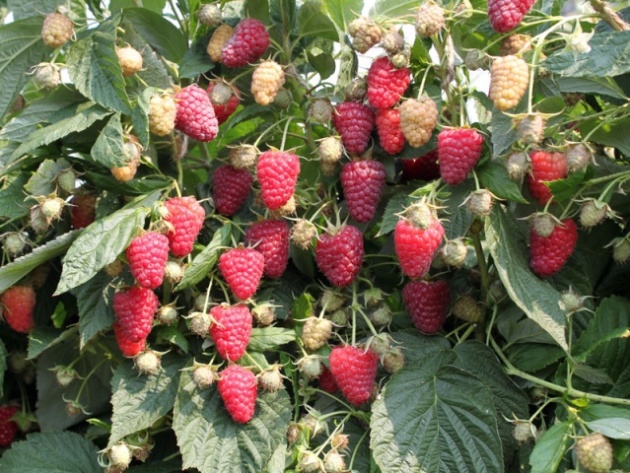
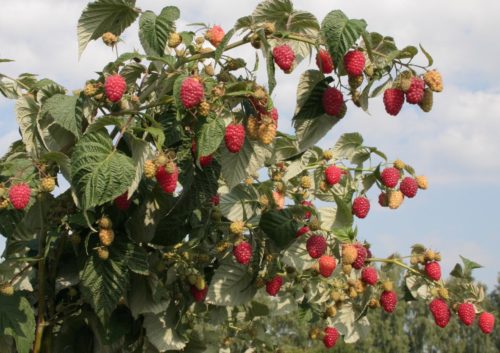

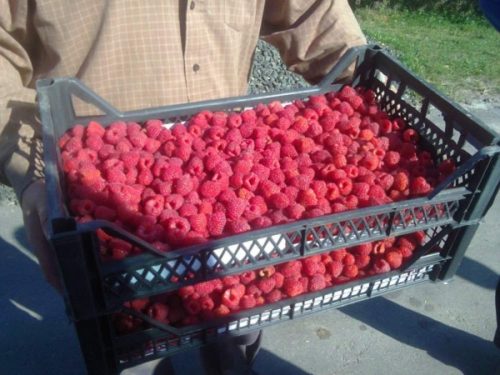
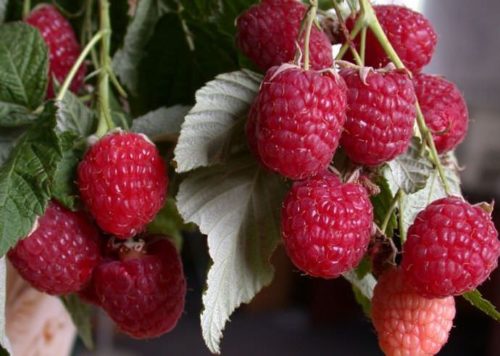
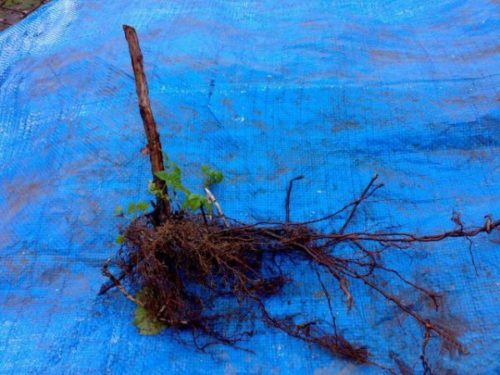
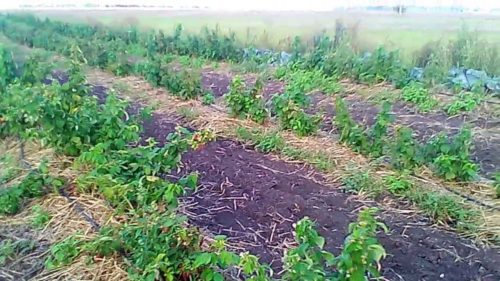
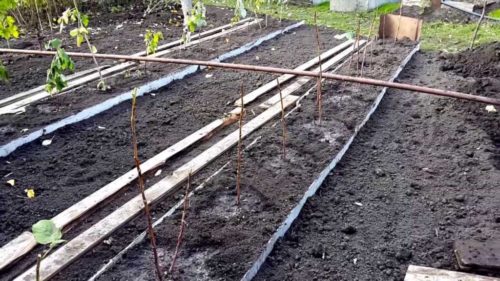
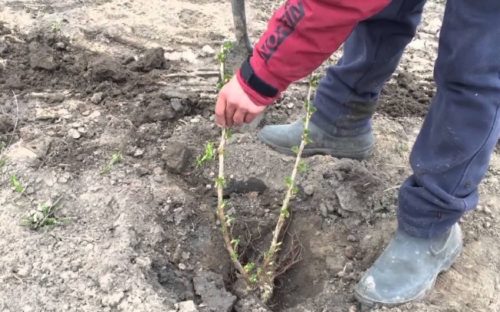
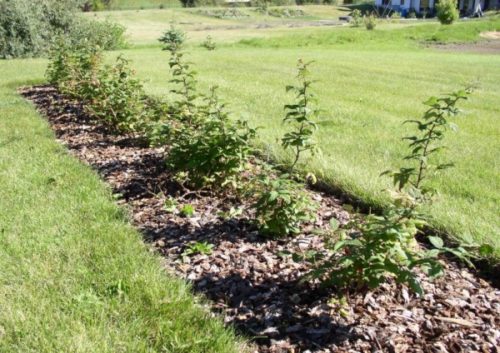
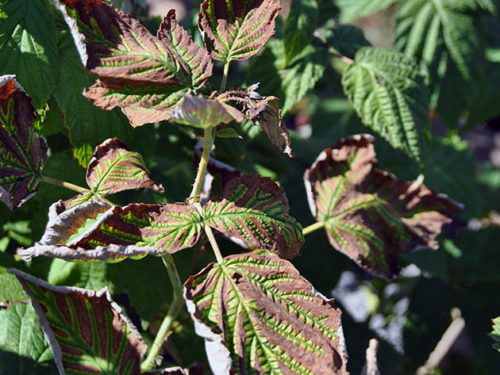
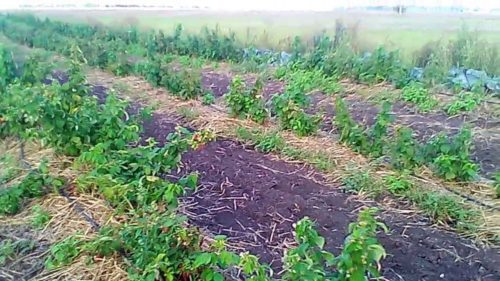

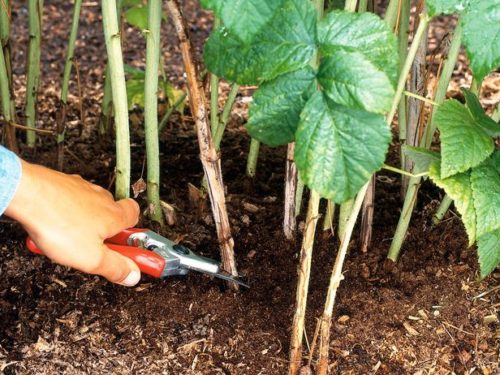
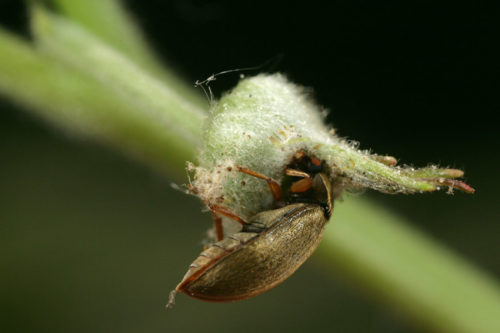
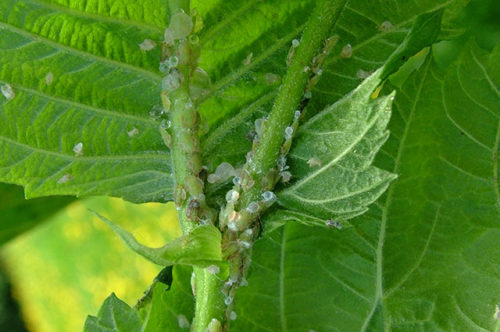
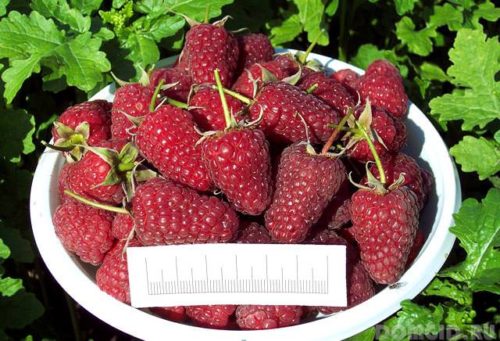
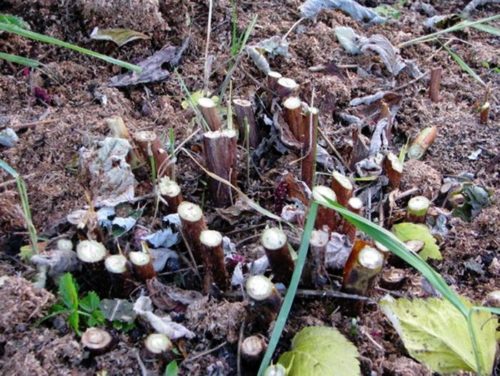
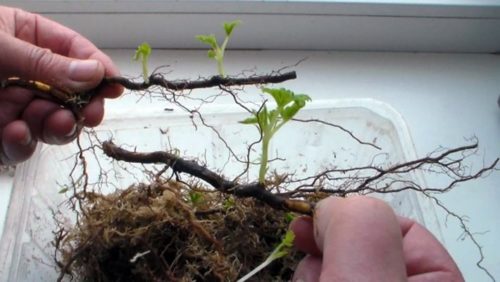
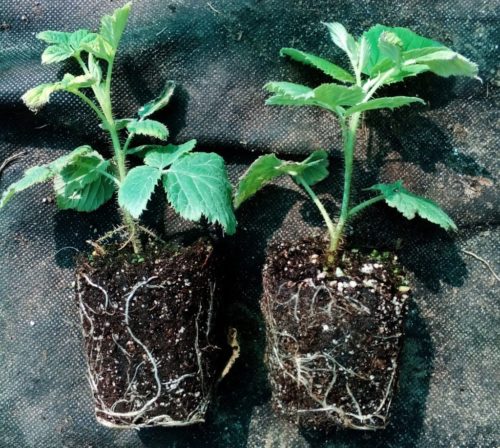
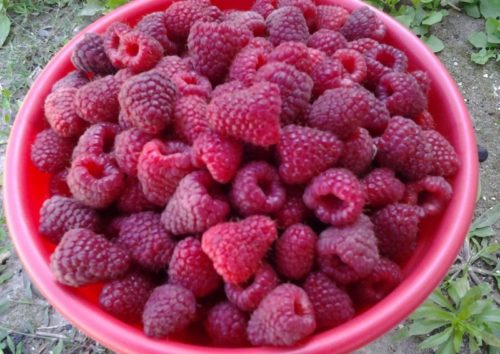
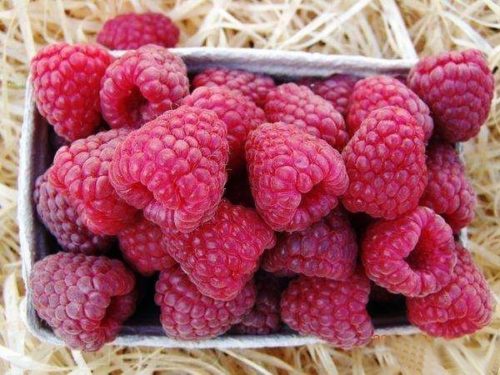
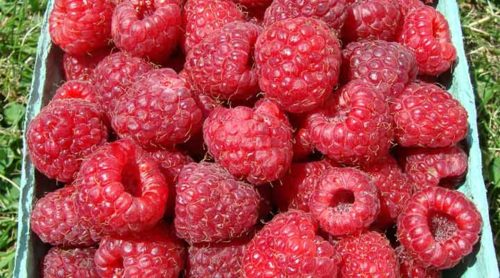












 Start a discussion ...
Start a discussion ...